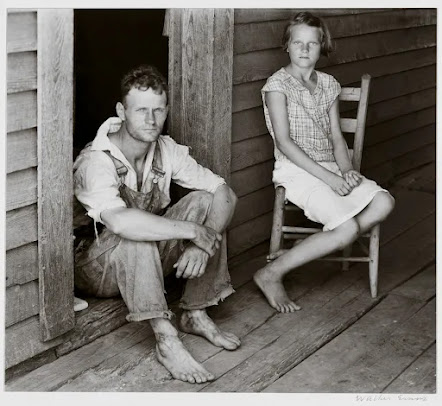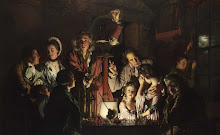The Great Depression and its influence on Early Modern Art during the Great Depression
I turn 43 next month, and I often reflect on my life and the people who have shaped me into the person I am today. My grandma Ruth has had the biggest impact on my life. The lessons she taught me have greatly influenced who I am. Those lessons have not only turned me into a man but also a gentleman.
She was like a walking storybook. I would sit and listen to her stories, captivated by her musical pieces played on the organ in the second living room—a space reserved for entertaining guests. Born in 1922 in Maine to farmer parents, she was just a little girl when the Great Depression hit. She recounted how her family was fortunate to have crops to feed themselves. They worked tirelessly in the fields to ensure there was enough food for their table, to sell to the surrounding communities, and to price it fairly, as many people couldn't afford to buy produce due to the lack of work. Often, food was exchanged for help on the farm. While it didn't pay all the bills, the sense of community was paramount.
She always preached that the keys to getting through life were faith in God, hard work, and taking care of your family. Being a gentleman to all walks of life, no matter who they are or where they come from, was paramount. Everyone deserves respect until they lose it, and even then, you should still treat them like a gentleman. These are the core principles that come to mind whenever I think of her. "Hard work" is the mantra I formed in my head when it comes to the Great Depression.
In school, we were taught about the effects of the Great Depression not only on American society but on the world as a whole. My view of that era has never changed; its image is cemented in my mind. Pictures around my grandma's house still evoke those times. Although life may have been hard, times seemed simpler. There were no smartphones, no television, no internet. Entertainment came from using your imagination while listening to the radio or relatives telling stories and playing simple board or card games. Let's explore works that remind me of time spent with my grandma and perhaps give you a glimpse of what life was like for people during that time.
Although my grandma's childhood farm was different, this painting captures the essence of what she described: working hard and knowing that other Americans were in the same situation, which made the work relatable and instilled a sense of pride in the accomplishments. This realization contributed to the sense of how great the country and its people are. The painting's flowy fields, sprouting crops, quaint house, and workers harvesting in the fields look and feel so smooth. It evokes a sense of tranquility and satisfaction. My grandma owned a print of this painting and proudly displayed it in her home.
American, C.S. (1970) Charles Sheeler: Americana, The Metropolitan Museum of Art. Available at: https://www.metmuseum.org/art/collection/search/486014 (Accessed: 24 July 2024).
Rudnick, A. (2023) The art of the Great Depression, The Metropolitan Museum of Art. Available at: https://www.metmuseum.org/perspectives/articles/2023/9/the-art-of-the-great-depression (Accessed: 24 July 2024).
Gurney, T. (no date) Young corn, Young Corn by Grant Wood. Available at: https://www.thehistoryofart.org/grant-wood/young-corn/ (Accessed: 24 July 2024).





Comments
Post a Comment